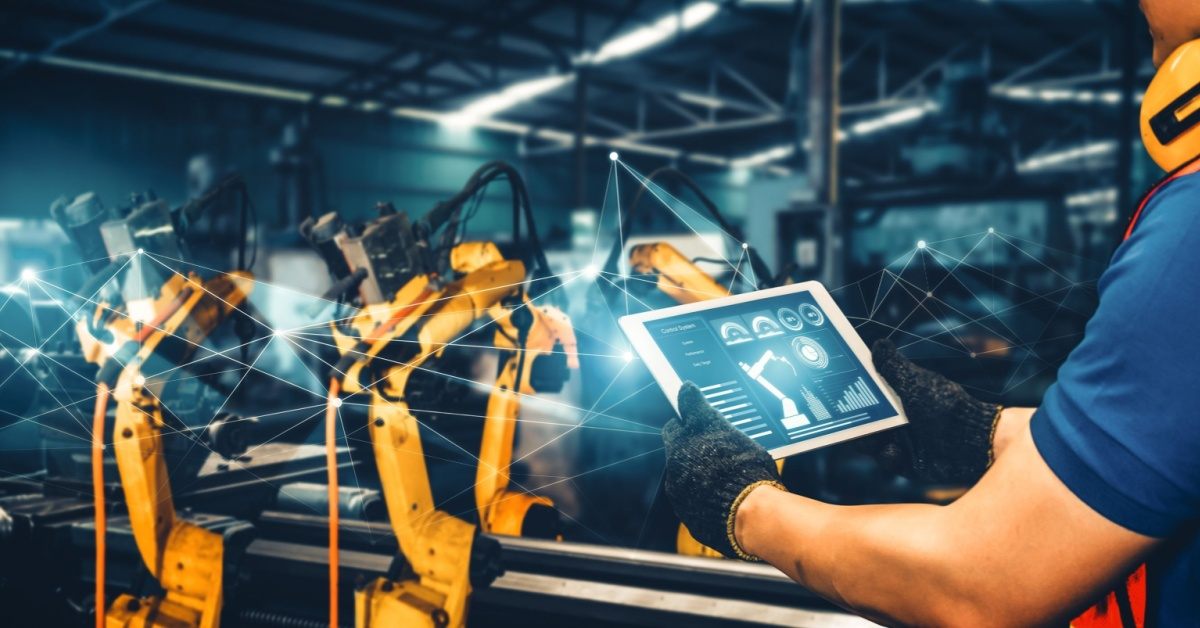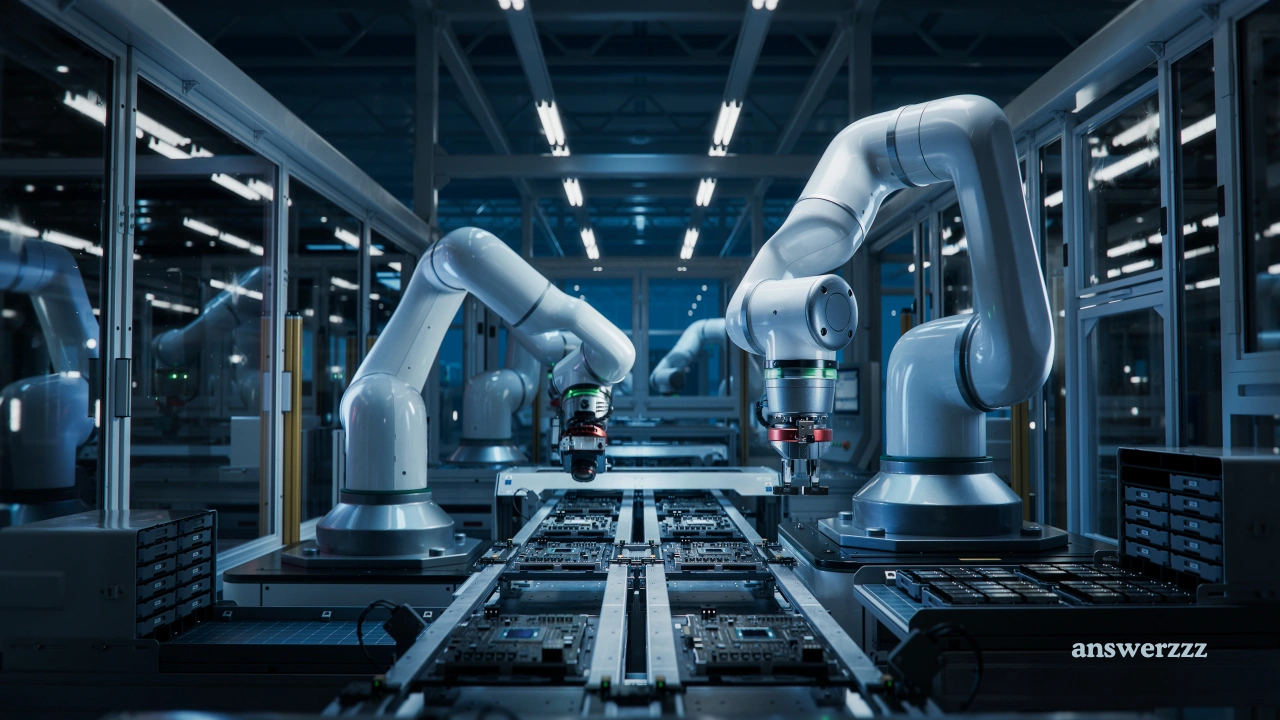The manufacturing industry, often considered the backbone of global economies, has witnessed profound transformations over the past few decades. With the rise of automation, robotics, and artificial intelligence (AI), the way products are conceived, designed, produced, and delivered has changed radically. As we look ahead to 2026, AI-driven robotics are poised to redefine the manufacturing landscape, driving productivity, efficiency, and innovation to levels previously thought unattainable. In this article, we will explore how AI-driven robotics are revolutionizing manufacturing in 2026, focusing on advancements in automation, machine learning, data integration, and human-robot collaboration.
1. The Rise of Autonomous Robots in Manufacturing

In 2026, the manufacturing sector is heavily relying on autonomous robots—machines capable of performing complex tasks with minimal human intervention. Autonomous robots are increasingly able to make real-time decisions based on environmental data, ensuring smoother and faster production processes. These robots can adapt to new tasks without requiring reprogramming, making them highly versatile.
AI technologies, including computer vision, sensors, and deep learning, are enhancing the capabilities of autonomous robots. For instance, AI-powered robots equipped with advanced sensors can detect irregularities in the manufacturing process and correct them in real-time. This capability significantly reduces the risk of defects and downtimes, resulting in a more efficient and reliable production system.
Autonomous robots also excel in repetitive tasks, where precision and speed are paramount. They can handle everything from assembly line tasks to packaging and quality control, freeing human workers to focus on more complex and creative aspects of production. In 2026, industries ranging from automotive manufacturing to electronics and consumer goods are leveraging autonomous robots to streamline their operations and maintain high standards of production.
2. AI-Powered Machine Learning for Predictive Maintenance
One of the most significant benefits of AI-driven robotics is predictive maintenance. Traditional manufacturing equipment requires regular manual inspections to prevent breakdowns, but AI-enabled machines take a proactive approach. Through the use of machine learning (ML), robots and other manufacturing equipment continuously collect data from sensors embedded in machines, such as temperature, vibration, and wear levels.
In 2026, AI systems will analyze this data to predict when a machine is likely to fail or require maintenance, enabling manufacturers to perform repairs before issues become critical. This predictive maintenance reduces costly downtime, extends the lifespan of equipment, and improves overall factory efficiency.
For example, in an automotive manufacturing plant, AI-powered robots equipped with sensors can detect subtle deviations in engine production. They can flag any components that are nearing failure, prompting technicians to perform maintenance on machinery before the production line is affected. The result is a smoother, more cost-effective operation with minimal disruptions to production schedules.
3. Personalized Production Through AI and Robotics
As customer expectations evolve, personalized products are becoming a key demand in many industries. The shift toward mass customization is one of the ways AI-driven robotics are transforming manufacturing in 2026. AI-powered robots are capable of adjusting production lines to accommodate varying specifications, allowing for the creation of unique, made-to-order products at scale.

For instance, in the fashion industry, AI-enabled robots can adjust the cutting patterns, fabric selection, and sewing techniques for each order, producing customized clothing at a fraction of the time and cost it would take using traditional methods. In consumer electronics, AI robots can assemble devices with different configurations or features based on customer preferences, while maintaining the efficiency of high-volume production.
This shift to personalized manufacturing also offers manufacturers the ability to cater to niche markets. Instead of mass-producing standardized products, companies can now produce small batches of customized goods more cost-effectively, allowing them to meet the demands of increasingly specific consumer tastes.
4. Smart Factories and the Internet of Things (IoT)
In 2026, AI-driven robotics will be central to the development of “smart factories,” where the Internet of Things (IoT) creates a network of interconnected devices that share real-time data and collaborate autonomously. This interconnected ecosystem will allow robots to communicate with each other, as well as with human workers, creating a seamless and highly efficient production environment.
Smart factories are designed to optimize operations by using data-driven insights to make real-time decisions. AI systems can monitor production processes, analyze the data from connected devices, and make adjustments to improve efficiency. For example, if a robotic arm detects that a part is not fitting correctly, it can communicate with other robots in the system to adjust the manufacturing process, preventing defects and improving quality.
In a smart factory, AI-powered robotics also work alongside IoT sensors to continuously monitor the factory floor. These sensors can detect anything from temperature fluctuations to equipment malfunctions, allowing for immediate action to be taken, even before the human operator notices the problem. This ensures that operations run smoothly and minimizes the risk of operational bottlenecks or quality control failures.
Nanotechnology in Medicine: The Latest Innovations You Should Know
5. Human-robot collaboration and Ergonomics
While robots are playing an increasingly dominant role in manufacturing, 2026 will also see a shift toward more human-robot collaboration. Rather than replacing human workers entirely, AI-driven robotics are designed to work alongside humans, enhancing their abilities and improving workplace safety.
Collaborative robots, or “cobots,” are designed to work in tandem with humans in shared spaces. These robots are equipped with advanced sensors and AI algorithms that allow them to safely interact with humans. For example, a cobot might assist a worker by lifting heavy components or assembling intricate parts that require high precision. The cobot adapts to the worker’s pace and complements their actions without the risk of injury.
This collaboration results in improved productivity and efficiency. Human workers bring creativity, problem-solving abilities, and expertise to the production process, while robots handle repetitive or physically demanding tasks. The synergy between AI-driven robotics and human labour creates a more productive, safer, and flexible working environment.
Furthermore, the ergonomics of robots are becoming more advanced, ensuring that human workers are not exposed to physical strain. For instance, AI-driven robots equipped with exoskeletons can help workers lift heavy objects with ease, reducing the risk of injury and enhancing physical well-being.
6. Advanced AI Algorithms and Design Optimization
In 2026, AI-driven robotics will go beyond the physical aspects of manufacturing and take on the design and optimization phases of production. AI algorithms will assist in designing products and components that are easier to manufacture, more durable, and cost-efficient. These AI systems can simulate and test multiple design variations before physical prototypes are even created, saving time and resources in the development phase.
Manufacturers are increasingly using generative design tools powered by AI. These tools allow robots to optimize designs by considering various constraints, such as material properties, production capabilities, and cost-effectiveness. For example, a robotic system might suggest a more lightweight design for a car part that is structurally stronger and uses less material, thus reducing both production costs and environmental impact.
Additionally, AI algorithms help optimize supply chain management by predicting demand and ensuring that the right materials are available at the right time. Robotics, integrated with these AI algorithms, help manufacturers manage inventory more efficiently, reducing waste and enhancing sustainability efforts.
7. Sustainability and Environmental Impact

As the world increasingly focuses on sustainability, AI-driven robotics are playing a crucial role in reducing the environmental footprint of manufacturing. These robots are being designed to be energy-efficient and minimize waste. For instance, AI algorithms can optimize resource usage in real-time, ensuring that raw materials are used as efficiently as possible.
Recycling is another area where robotics and AI are making an impact. In 2026, AI-powered robots equipped with advanced vision systems can sort and separate recyclable materials with high precision, significantly improving the recycling process. By incorporating these robots into production lines, manufacturers can increase their sustainability efforts and reduce their reliance on virgin materials.
Furthermore, AI is helping to reduce the environmental impact of manufacturing by optimizing energy usage. AI-driven robotics can adjust machine settings in real-time to ensure that energy consumption is minimized, leading to both cost savings and a reduction in carbon emissions.
8. The Future of AI-Driven Robotics in Manufacturing
Looking beyond 2026, the future of AI-driven robotics in manufacturing is incredibly exciting. Advances in AI algorithms, robotics, and connectivity will continue to push the boundaries of what is possible in the factory setting. New capabilities, such as advanced natural language processing, autonomous decision-making, and fully integrated supply chains, will further enhance the efficiency and flexibility of manufacturing operations.
The Future of Wearable Tech: Smart Fabrics and Health Monitoring in 2026
As these technologies evolve, we can expect to see even more intelligent, adaptable, and autonomous robots working alongside human workers in increasingly seamless collaborations. Manufacturers will continue to integrate AI-powered robots into every aspect of production, from design and prototyping to assembly and quality control.
AI-driven robotics are undeniably revolutionizing manufacturing in 2026, enhancing productivity, efficiency, and customization. From autonomous robots that make real-time decisions to predictive maintenance systems and smart factories, these technologies are transforming the way products are made. Furthermore, the collaboration between human workers and AI-powered robots is creating safer, more flexible, and more productive working environments.
As AI algorithms and robotics continue to advance, the manufacturing industry will see even more significant changes, ushering in a new era of intelligent, sustainable, and highly efficient production. For manufacturers, embracing AI-driven robotics is not just a trend—it is a necessity for staying competitive in an increasingly automated world.



